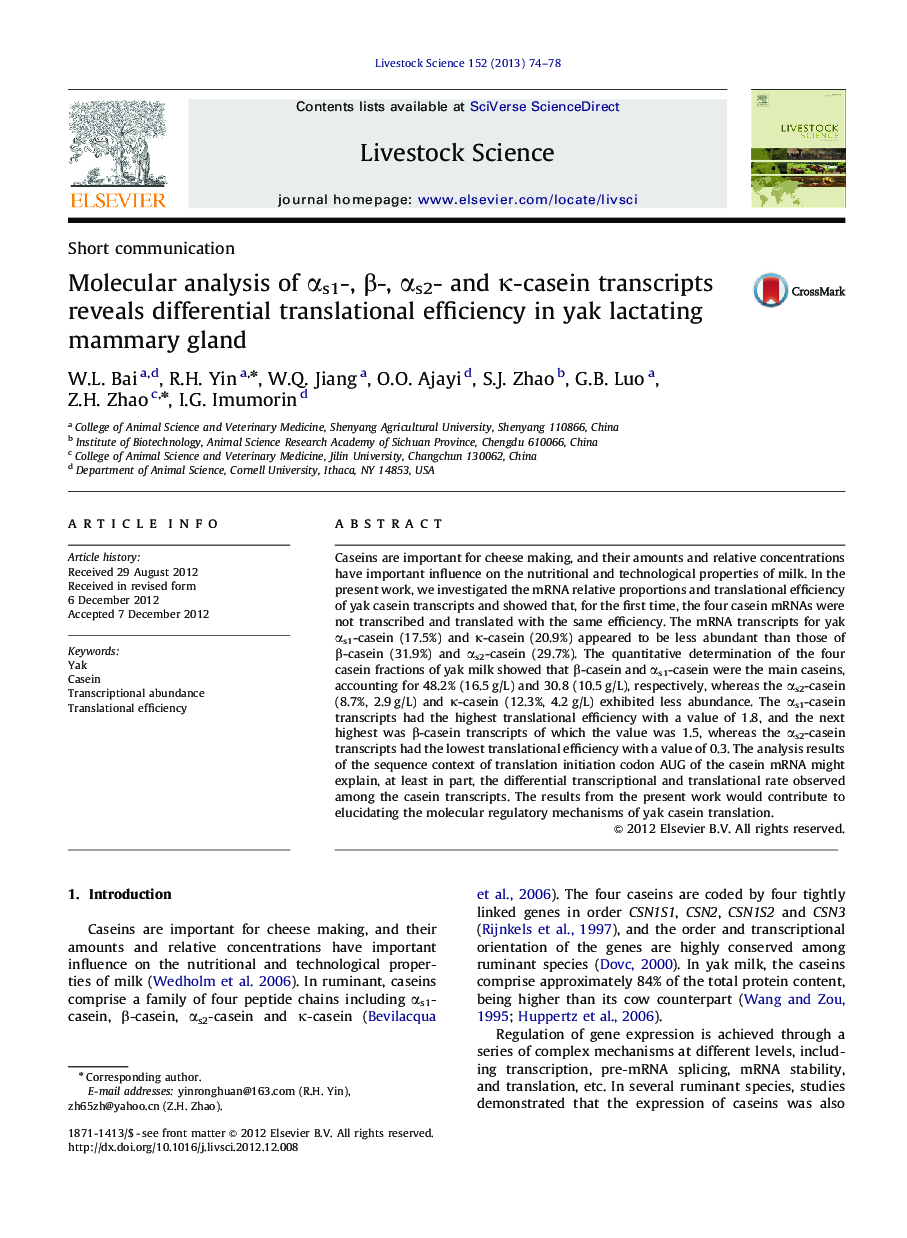| Article ID | Journal | Published Year | Pages | File Type |
|---|---|---|---|---|
| 2447408 | Livestock Science | 2013 | 5 Pages |
Caseins are important for cheese making, and their amounts and relative concentrations have important influence on the nutritional and technological properties of milk. In the present work, we investigated the mRNA relative proportions and translational efficiency of yak casein transcripts and showed that, for the first time, the four casein mRNAs were not transcribed and translated with the same efficiency. The mRNA transcripts for yak αs1-casein (17.5%) and κ-casein (20.9%) appeared to be less abundant than those of β-casein (31.9%) and αs2-casein (29.7%). The quantitative determination of the four casein fractions of yak milk showed that β-casein and αs1-casein were the main caseins, accounting for 48.2% (16.5 g/L) and 30.8 (10.5 g/L), respectively, whereas the αs2-casein (8.7%, 2.9 g/L) and κ-casein (12.3%, 4.2 g/L) exhibited less abundance. The αs1-casein transcripts had the highest translational efficiency with a value of 1.8, and the next highest was β-casein transcripts of which the value was 1.5, whereas the αs2-casein transcripts had the lowest translational efficiency with a value of 0.3. The analysis results of the sequence context of translation initiation codon AUG of the casein mRNA might explain, at least in part, the differential transcriptional and translational rate observed among the casein transcripts. The results from the present work would contribute to elucidating the molecular regulatory mechanisms of yak casein translation.
